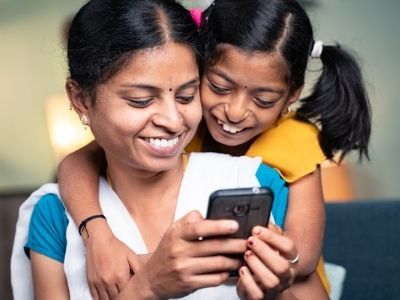Parents learn about the significance of internet safety for their children from a variety of sources, from news channels that are never short of tales regarding children and online predators and local authorities constantly warning parents about children’s safety in this tech-savvy era. These occurrences are raising worries among parents about their children’s internet safety and privacy.
Parents nowadays must ensure that they are doing all necessary to teach their children about safe internet behaviours and that the security of their children’s gadgets is taken into account. Here are some suggestions for keeping your children safe online.
Make an effort to learn about what’s going on in their life
Open lines of communication are essential in many parts of parenting, especially when it comes to internet safety. Because cyberbullying is similar to its real-life equivalent. It’s something that a lot of youngsters don’t want to talk about because they’re afraid of getting in trouble or losing their Internet connection.

Make it evident that you care about all aspects of your children’s lives. Also, let them know that they may come to you with any troubles they may be experiencing. Show your kids by actively listening throughout everyday interactions.
Protect privacy by being ‘share aware’
If your kid is a frequent user of social media, they should be informed that posting personal information or photographs exposes them to the possibility of it being made public. You should teach kids to be cautious and mindful about what they post and share online, even if they don’t completely comprehend the ramifications of sharing personal information online.

Encourage your children to think about whether the information (. i.e. name, phone number, home address, email, school name) or photo they are sharing is something they would provide to a stranger before publishing it. If the answer is no, don’t post it.
If your child is sharing images or postings on the internet, ask them to show you what they’re sharing, or have an older sibling double-check any photos before they’re posted.
Know who your children are talking to
If your children are old enough to communicate with others online, you should know who these online friends are. It’s usually acceptable if they’re classmates, relatives, or neighbourhood youngsters, but strangers or someone claiming to be a friend to get close to your child might pose a major threat to your children.

Keep an eye out for cyberbullying and persons impersonating friends and relatives; it happens more frequently than you would believe.There are social networks particularly developed for children that allow them to learn how to connect online in a secure setting.
Use technology to keep children safe
Check that your child’s gadget has the most up-to-date software and antivirus applications installed, as well as that privacy setting, are turned on. Metadata (information regarding the time, date, and GPS locations) in digital images may expose more than you want.
Some social media networks, but not all, automatically conceal or erase this data, so do your research and be aware of how much information you’re posting.

Free internet educational resources should be used with caution. To utilise these tools, your child should never be required to share a photo or their entire identity. To keep data gathering to a minimum, remember to check the privacy settings. Help your youngster understand the need of keeping personal information private, particularly from strangers.
Keep screens and gadgets in clear view
Always keep an eye on your child’s online activity, especially if they are young. Put the computer in a central area in the house so you can keep an eye on what your child is doing and seeing on the internet. You may set your mobile devices to forget Wi-Fi passcodes so that your children can’t surf online without your knowledge.
You might also try to come to an agreement that no tablets, computers, or gaming devices are allowed in bedrooms. If your child is younger, you may want to check their browser history to see what sites they’ve visited after they’ve been online.
Find expert tips for setting up study space for online classes.
Establish ground rules
Before giving your children access to a computer or mobile device, set ground rules about what they should and should not do. To begin, set time limitations for online use. When people’s time online isn’t wasted, they’re less likely to end up somewhere they don’t want to be.

Tell your children to communicate with you before giving personal information such as their names or addresses to strangers they encounter online. If they observe anything that disturbs or worries them, they should inform you straight away.
Teach children how to take action on their own
Teach your children how to utilise the privacy, reporting, and blocking features on the websites they visit to demonstrate that they can be proactive online. Older children may be more knowledgeable about the internet than you are. Make them the experts and have them demonstrate to you the security aspects of the websites they visit.
It’s critical not to portray the Internet as a dangerous place to avoid at all costs. You don’t want to instil fear in your kid or prevent them from making use of the internet’s numerous educational, entertainment, social, and other advantages; rather, you want to provide them with the knowledge and skills they need to make the most of it while avoiding the dangers.
In many visible and invisible ways, children emulate their parents. Teaching children ways to use the Internet securely is far better than imposing rules and restrictions upon them.
